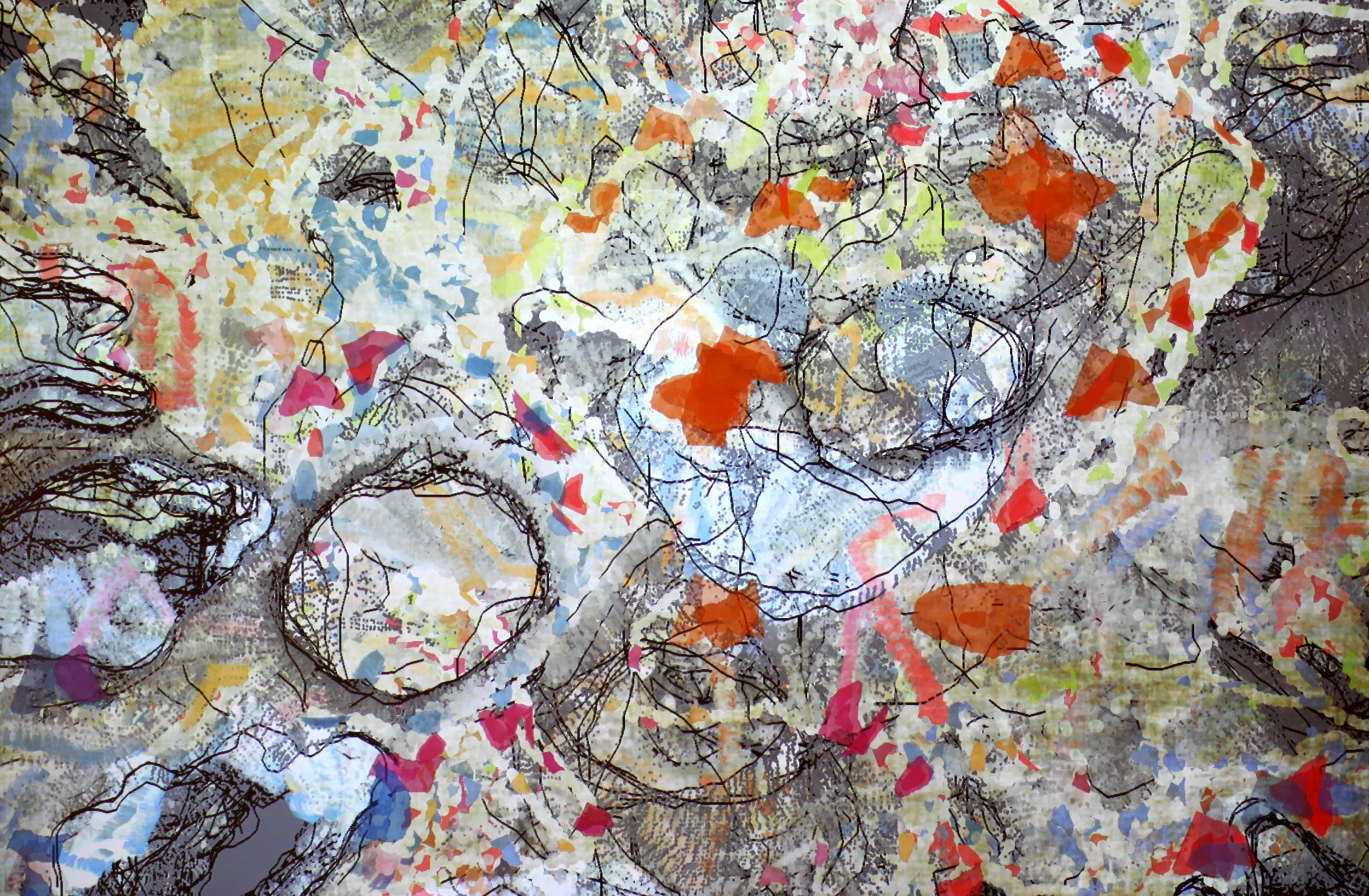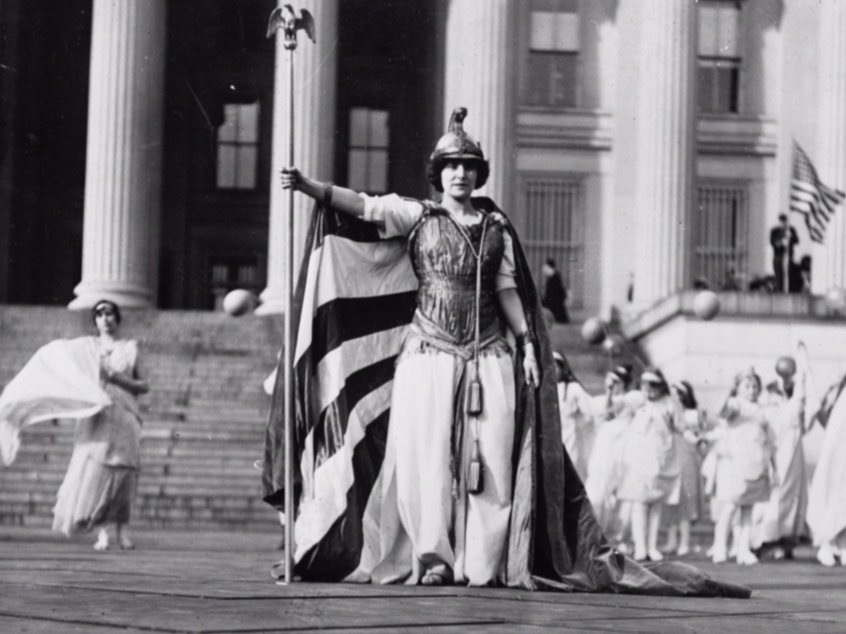Black Out: Silhouettes Then and Now - Curator's Edit

Curator Asma Naeem shares her five favourite works from the new exhibition Black Out: Silhouettes Then and Now at the National Portrait Gallery, Washington D.C. The show is the first major museum exhibition to explore silhouettes' historical roots and powerful contemporary presence as an art form, exploring works from 1796 to the present. The 50 objects in the exhibit include depictions of those "who have been previously “blacked out” in historical narratives by presenting silhouettes of same-sex couples, cooks, activist women, enslaved individuals and disability pioneers".
1. Flora and Bill of Sale by Unidentified Artist
"The silhouette of Flora is one of the earliest depictions of an enslaved person in the country, and is, quite simply, a national treasure. It appears to have been drawn from Flora’s shadow made by candlelight. Flora’s hair, seen as spiky cone-like forms, crowns a profile of a flat nose, large lips, and prominent chin. Written underneath her chin is the phrase, “Flora’s profile.”
You can see with startling accuracy the life-size profile image of a nineteen-year old woman who was bought and sold and treated as a piece of property. The accompanying bill of sale, dated December 13, 1796, states that, “a certain negro wench named Flora” was sold to the Benjamin family for twenty-five pounds sterling. According to Benjamin family documents, the household had one servant in 1800, and there was a death of a woman named Flora on August 31, 1815.
Like many enslaved people of her time, Flora was never imaged in a painting. The only way that we know what Flora looked like, who was for all purposes powerless, is through the form of this haunting silhouette."
2. Ledger book of William Bache, with associated pieces by William Bache
"This is a striking, massive album that contains 1,846 silhouettes of everyone from George and Martha Washington to laborers. The silhouettes cutter, William Bache, was one of the hundreds of entrepreneurial artisans who would roam town to town offering his services of cutting four silhouettes for 25 cents. After he traced and cut the profile, he gave the hollowed out paper to his customer and kept the head for his ledger. Profiles were thought at the time to reveal much about a person’s inner qualities and moral character.
Bache started cutting silhouettes in Portland, Maine, and ended up in New Orleans, Louisiana, where he rented a room on Royal Street for patrons to come and have their portrait made. The album is a testament to the bustling, diverse voices that made up America in the early 1800s, showing children, Creole citizens, women in fancy hats, and military heroes."
3. Maibaum by Kristi Malakoff
"One of artist Kristi Malakoff’s fondest childhood memories is the annual maypole celebration in her hometown in British Columbia, where children would gather and dance with ribbons around a decorated tree or pole to celebrate May Day. Inspired by this annual event, Malakoff created this work, which features life size paper sculptures twenty children in Victorian costume, spinning ribbons around a maypole as fifty birds flutter overhead.
The preparation, attention to detail, and hours of labor required to make this intricate installation piece is utterly mind-boggling. Malakoff observed and photographed children at play, embellished their vintage clothing, and then recreated each child using a cutting instrument, paper, and foam board. Twirling ribbons, and wearing knickers, caps, and embroidered dresses, the children hop, skip, and dance. Like many of her other works, Malakoff explores tensions between craft and art, two-dimensional flatness and three-dimensional volume."
4. Chair by Kumi Yamashita
"The materials in Kumi Yamashita’s work are so deceivingly simple: wood, light, and a wall. From these pieces, a profile shadow of an individual appears to be seated on a chair – but the person who created this shadow is nowhere to be seen. In fact, a detailed carving on the entire side of the wooden chair, only visible when the viewer approaches the work from an oblique angle, creates the shadow on the wall when lit.
The daughter of a sculptor and professor of industrial design, Yamashita believes in the philosophy of conceptual humanism. As she puts it, “for me, shadows came to symbolize another dimension of life, perhaps something more real than its holder.”"
5. Precarious by Camille Utterback
"With Precarious, artist Camille Utterback has created a digital artwork that traces each visitor’s silhouette as seen from an overhead camera. Her site-specific, digital drawing systems, as she calls them, are based on code and interface strategies of her own design that require the movement of the viewers to create individualized artistic effects on the screen in front of them. Viewers quickly realize that they are participants creating their own visual fields, and a sense of playfulness takes over.
Utterback manipulates the outline of our silhouettes to challenge the abstractions and alienation that our current technological age engenders. Her work affirms that individuals and their bodies – their hands, ears, eyes, mouths, and feet – are the generators of the World Wide Web."
Black Out: Silhouettes Then and Now is at the National Portrait Gallery, Smithsonian Institution, Washington D.C. until 24 March 2019.
Asma Naeem is Curator of Prints, Drawings & Media Arts at the National Portrait Gallery, Smithsonian Institution, Washington D.C.
IMAGE CREDITS
Flora and Bill of Sale by Unidentified Artist
Flora: cut paper on paperboard, with pen and brown ink Bill of sale: pen and brown ink on laid paper 1796
Stratford Historical Society, Stratford, CT
Ledger book of William Bache, with associated pieces by William Bache
Black paper coated silhouettes mounted on paper
c. 1803-1812
National Portrait Gallery, Smithsonian Institution; partial gift of Sarah Bache Bloise
Maibaum by Kristi Malakoff paper and foam core 2009 Photo: Kristi Malakoff
Profile by Kumi Yamashita Wood, single light source, and cast shadow 1994 Photo: Ryo Sekimura
Chair by Kumi Yamashita Wood, single light source, and cast shadow 2015 Photo: Hiroshi Noguchi
Precarious by Camille Utterback Interactive installation (depth camera, custom software, computer, projection, lighting) 2018 Photo: Brett Bowman, 2018









